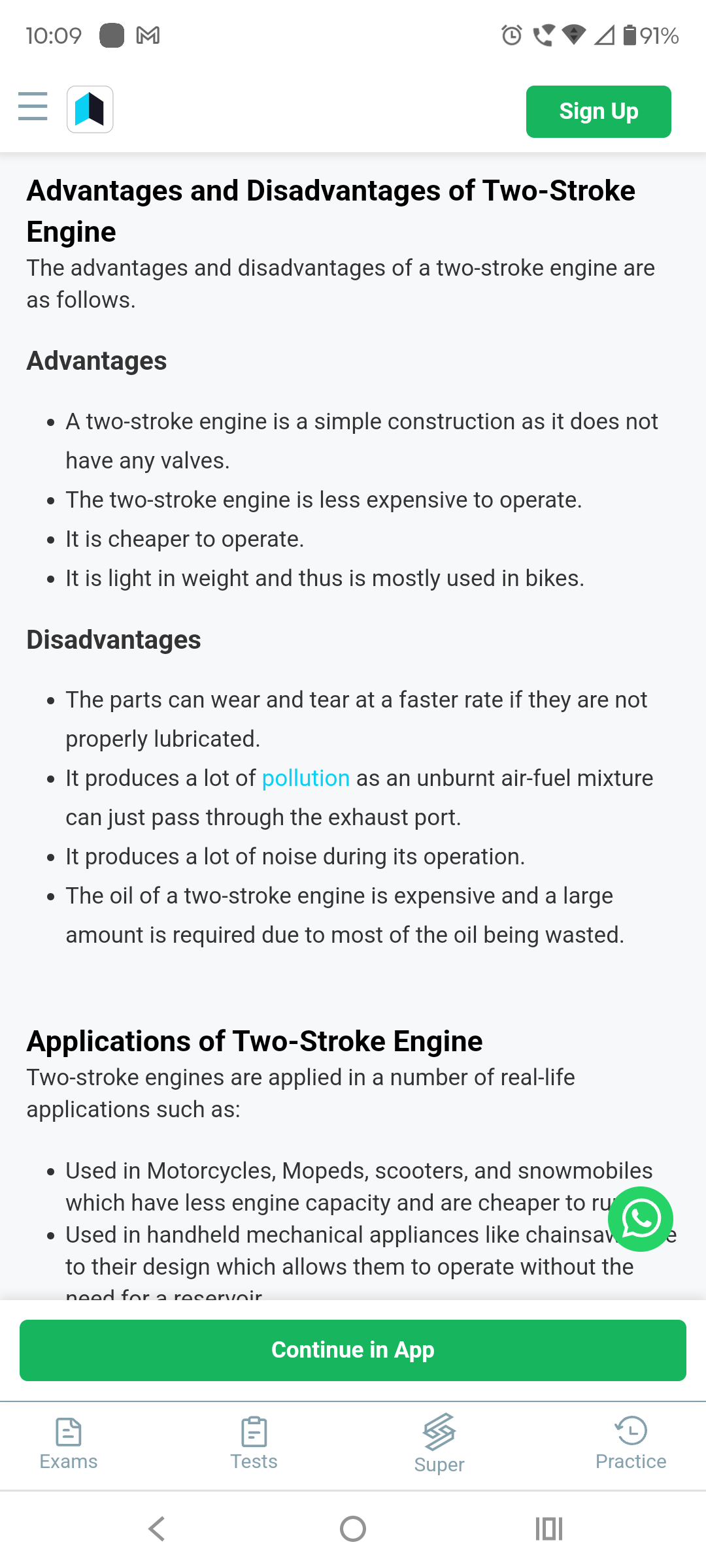Define the working of two stroke petrol and diesel engine.

Understand the Problem
The question is asking for a description of how two-stroke petrol and diesel engines work, which includes the processes involved in each type of engine.
Answer
Two-stroke engines complete a power cycle in two piston movements; petrol engines use spark plugs, while diesel uses compression ignition.
A two-stroke engine completes a power cycle in two movements (up and down) of the piston per crankshaft revolution. In petrol engines, a mixture of air, fuel, and oil is drawn into the crankcase, compressed, and ignited by a spark plug. In diesel engines, only air is compressed, then diesel is injected, causing ignition.
Answer for screen readers
A two-stroke engine completes a power cycle in two movements (up and down) of the piston per crankshaft revolution. In petrol engines, a mixture of air, fuel, and oil is drawn into the crankcase, compressed, and ignited by a spark plug. In diesel engines, only air is compressed, then diesel is injected, causing ignition.
More Information
Two-stroke engines are popular in applications needing a power stroke per crankshaft revolution, ideal for lightweight vehicles.
Tips
Confusing the intake process between petrol and diesel engines can lead to misunderstandings. Remember, petrol uses a spark plug and a fuel-air mixture, while diesel relies on air compression and fuel injection.
Sources
- How Diesel Two-Stroke Engines Work - Auto | HowStuffWorks - auto.howstuffworks.com
- Two-stroke engine - Wikipedia - en.wikipedia.org
- Two-Stroke Engine: Diagram, Parts, Working, and Applications - testbook.com
AI-generated content may contain errors. Please verify critical information